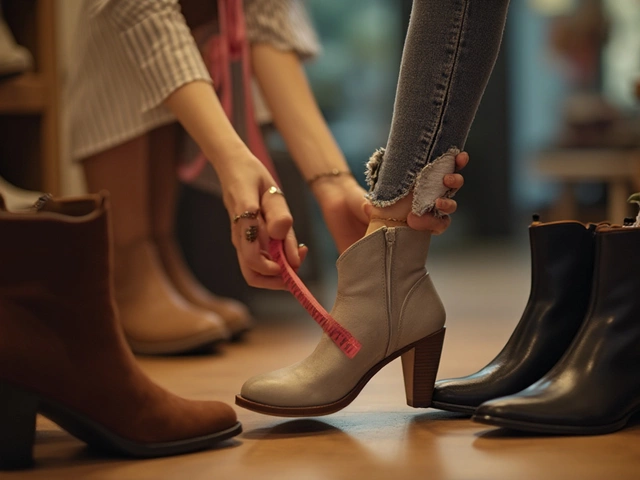Popular T-Shirt Size: How to Pick the Right Fit in Minutes
Ever stare at a rack of tees and wonder which one will actually fit? You’re not alone. The secret isn’t a magic formula – it’s just a few simple steps you can do at home. Grab a soft tape measure and follow this guide, and you’ll know exactly which size to grab the next time you shop.
Measure Yourself the Right Way
First thing: measure your chest, not your waist. Wrap the tape around the fullest part of your chest, keeping it level across your back. Write that number down. Next, measure your torso length – from the base of your neck (where the shirt collar sits) down to where you want the shirt to end. Most people prefer the hem just below the hip bone, but if you like a cropped look, note that too.
Now compare those numbers to a basic size chart. In the US, a chest of 38‑40 inches is usually a Medium; 42‑44 inches is a Large. In the UK, the same measurements are labeled M and L as well, but some brands shift a size up or down. The key is to always check the retailer’s specific chart because a ‘Medium’ can range from 38 to 42 inches depending on the cut.
Fit Preferences: Tight, Classic, or Loose?
If you like a skinny fit, subtract one size from the chart recommendation. If you prefer a relaxed or oversized vibe, add a size. For example, a 40‑inch chest measured as a Medium in a standard cut will feel snug. Go up to Large if you want a bit of room for movement. A quick tip: hold the shirt up to your chest; you should see about one finger width of fabric on each side when the shirt is buttoned at the top.
Don’t forget about sleeve length. Short‑sleeve tees are usually standard, but if you have long arms, check the sleeve measurement. Some brands list “regular” and “tall” lengths. A tall size adds about an inch to the sleeve and body length, which can make a huge difference in comfort.
When you’re buying online, look for the “model’s size” note. Most product pages show the model’s height, chest, and the size they’re wearing. Use that as a reference point. If the model is 6 ft tall with a 38‑inch chest wearing a Medium, and you’re 5′10″ with a 42‑inch chest, you’ll likely need a Large.
Finally, read the reviews. Shoppers often comment on whether a shirt runs small, true‑to‑size, or large. Those clues can save you a return.
With these steps you can stop guessing and start buying tees that fit right the first time. Measure, compare, decide on your fit preference, and double‑check the product details – that’s all you need.
Now you know the popular t‑shirt sizes, how US and UK charts differ, and how to adapt the size to your personal style. Next time you’re scrolling through a catalog, you’ll pick the perfect size in seconds, no return hassle needed.

The Most Popular T-shirt Size: What Sells Best and Why
This article explores the most commonly sold t-shirt size and delves into the reasons behind its popularity. We'll discuss various factors that influence size trends, including demographics and fashion preferences, and provide tips for retailers to optimize their inventory based on these insights. Understanding these trends can be crucial for businesses looking to improve their sales strategy and meet consumer demand effectively.




